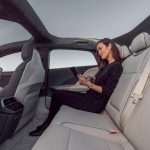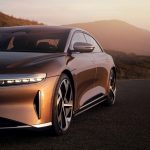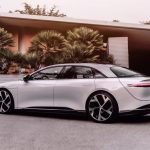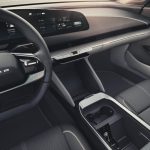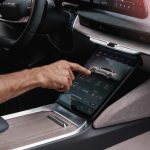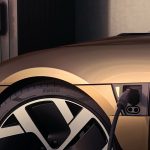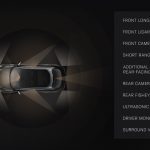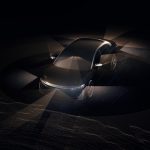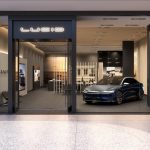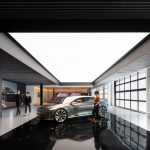

News
Lucid Air unveiling: four variants, <$80k starting price, 1,080 HP, 517-mile range rating
Lucid has officially unveiled the Air, the company’s first production car, which aims to break the bounds of EV technology everywhere. The company’s September 9th unveiling event revealed the four variants of the Air, along with its tech developments that the company is using to compete directly with the growing electric vehicle market.
Deliveries of the first Air models will begin in Spring 2021, but the car has already set several new and unheard-of records for the EV sector. Not only is the Air currently holding the benchmark for EPA-estimated range at 517 miles, but its “Dream Edition” variant also set a 9.9-second quarter-mile record, becoming just the third production ar on Earth to ever accomplish that feat.
Lucid’s primary focus is similar to Tesla’s: Create a high-performance and efficient electric cars that help accelerate the world’s transition to sustainable transportation.
“Lucid Motors is driven to make the electric car better, and by doing so, help move the entire industry forward, towards accelerated adoption of sustainable mobility,” CEO and CTO Peter Rawlinson said. “The goal of this relentless approach to developing the world’s most advanced electric vehicle is to benefit all mankind with sustainable, zero-emission transportation, and to also attract new customers to the world of EVs.”
The company’s ideal entrance into the market was to create a car that would push the limits and be competitive with the leaders of the EV sector. The Air is the near-perfect car to do that with.
“With the Lucid Air, we have created a halo car for the entire industry, one which shows the advancements that are possible by pushing the boundaries of EV technology and performance to new levels,” Rawlinson added.
Lucid Space Concept
Lucid Air captures a revolutionary approach to automotive packaging, known as the Lucid Space Concept. The idea capitalizes on the compact design of Lucid’s in-house powertrain, which optimizes interior cabin and storage space. The company focused on a clean-cut, holistic approach that was never-before-seen from other companies who develop electric vehicles.
Lucid’s focus was to make smaller, yet more powerful electric motors that not only increase the performance of the vehicle but also give passengers a more comfortable experience. “This extends the philosophy of hyper-efficiency embedded in every facet of Lucid Air, from energy to spatial efficiency, delivering an unprecedented combination of range, practicality, performance, and luxury,” the company said.
- Credit: Lucid Motors
- Credit: Lucid Motors
The design also is drastically different from any other car on the road. While the differences are subtle, the modern proportions for the Air deliver a one-of-a-kind look that gives drivers a unique design.
“When we embarked on this journey at Lucid Motors and the development of our first vehicle, the Lucid Air, we refused to compromise. We decided early on that we were going to pursue every facet of performance, innovation, and luxury,” Vice President of Design, Derek Jenkins, said.
- Credit: Lucid Motors
- Credit: Lucid Motors
- Credit: Lucid Motors
- Credit: Lucid Motors
Advanced Glass Cockpit Displays with Tactile Physical Controls
The interior of the Lucid Air “reflects a revolution in how next-generation free form displays are elegantly integrated into the design architecture in the cabin,” the company states. The Air’s 34-inch curved glass 5K display sits lightly above the dashboard, contributing to an airy and light feel of the interior.

A retractable central Pilot Panel also sits in a convenient location for drivers, putting ultimate control into their fingertips. Digital displays are complemented by high tactile, precision-milled physical controls that are present for operators to take full control of their vehicle with ease of access.
- Credit: Lucid Motors
- Credit: Lucid Motors
Record-Breaking Performance
The Air’s Dream Edition variant, a Dual-Motor, All-Wheel-Drive architecture achieved the quarter-mile in just 9.9 seconds thanks to a 1,080 horsepower powertrain. It reached these times on a consistent and repeatable basis, and to date, it is the only electric sedan to achieve the sub-10 second quarter-mile time.
Additionally, the 113 kWh battery pack complements its high-performance specifications with 517-miles of all-electric range on a single charge.
World’s Fastest Charging Electric Vehicle
The Lucid Air will be the fastest charging EV in the world when it arrives on the market in the Spring. The company states that it will have the capability to charge at rates of up to 20 miles per minute when connected to a DC Fast Charging network. Owners will translate just 20 minutes of charging into 300 miles of range.
Additionally, Lucid plans to introduce a Vehicle-to-Grid and Vehicle-to-Vehicle charging infrastructures that will give owners bi-directional capabilities that are built into the Air.
“Home charging is one of the key benefits of EV ownership. In addition to the standard Lucid Mobile Charging Cord that comes with every Lucid vehicle, Lucid has also developed the Lucid Connected Home Charging Station, one of the first AC charging stations with bi-directional charging ever offered. With bi-directional charging, owners can enjoy not just a more cost-effective charging method, but also use their Lucid Air as a temporary energy reserve to power their homes, including off-grid vacation properties,” the company noted.
- (Credit: Lucid Motors)
- (Credit: Lucid Motors)
Next Level Advanced Driver Assistance Systems (ADAS)
Lucid’s DreamDrive is a first-of-its-kind platform that combines the most comprehensive sensor suite on the market with a cutting-edge Driver Monitoring System. It is standard on the Lucid Air Dream Edition and is the first system to ever combine 32 sensors with covering vision, radar and ultrasonics, and high-resolution LIDAR. The combination of these systems provides “the safest possible approach to Level 2 and Level 3 driver assistance technologies,” the company stated.
- Credit: Lucid Motors
- Credit: Lucid Motors
Variants and Availability
The Lucid Air will be available in the North American market initially with four model ranges.
- The Air, starting below $80,000 and available in 2022. ($72,500 after federal tax credits)
- The Air Touring, starting at $95,000, available late 2021. ($87,500 after federal tax credits)
- The Air Grand Touring, starting at $139,000, available mid-2021. ($131,500 after federal tax credits)
- The Air Dream Edition, starting at $169,000, available Spring 2021. ($161,500 after federal tax credits)

Reservations are now open for customers in the U.S. and Canada, as well as in select countries in Europe and the Middle East. The reservation requires a $1,000 refundable deposit, or $7,500 refundable deposits for the Dream Edition. Prices and delivery dates will be available for international markets at a later date.
The Air will be available through 20 Lucid Studios and Service Centers that will open across North America by the end of 2021.
- Credit: Lucid Motors
- Credit: Lucid Motors
- Credit: Lucid Motors
- Credit: Lucid Motors
Dream Edition
“The Lucid Air Dream Edition will feature a unique combination of Lucid attributes and technology, combining incredible performance with exceptional range. The 1,080 horsepower luxury EV sedan will be available in Stellar White, Infinite Black, or a Dream Edition-exclusive, Eureka Gold finish. Each color will come with an exclusive “Santa Monica” themed interior trim, including full Nappa grain, Bridge of Weir leather throughout with silvered Eucalyptus wood. The Dream Edition will also feature a unique 21-inch “AeroDream” wheel design and be highlighted by special badging and trim that marks its position as a limited-production halo edition of the Lucid Air.”
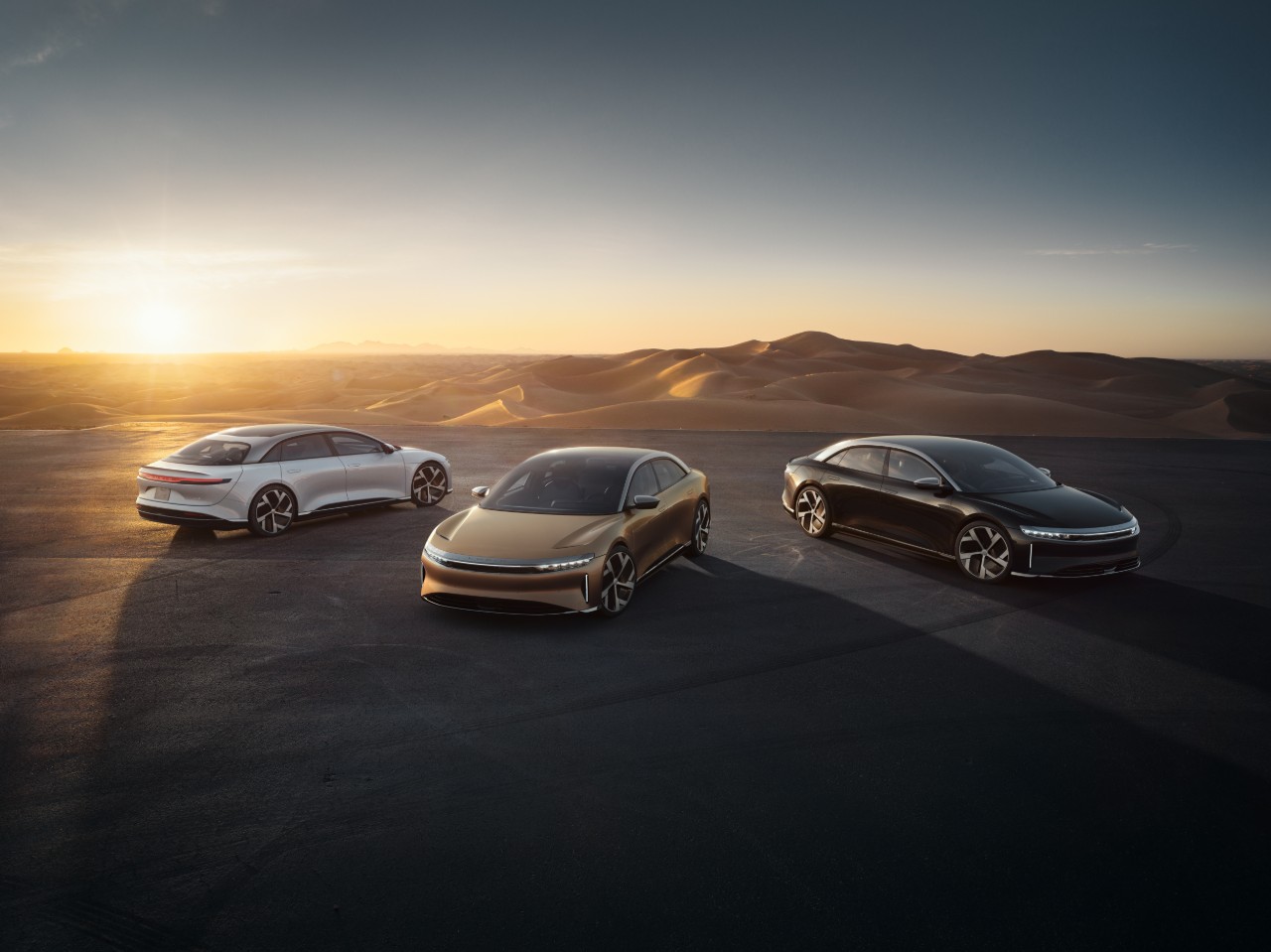

News
Tesla Model 3 named New Zealand’s best passenger car of 2025
Tesla flipped the switch on Full Self-Driving (Supervised) in September, turning every Model 3 and Model Y into New Zealand’s most advanced production car overnight.

The refreshed Tesla Model 3 has won the DRIVEN Car Guide AA Insurance NZ Car of the Year 2025 award in the Passenger Car category, beating all traditional and electric rivals.
Judges praised the all-electric sedan’s driving dynamics, value-packed EV tech, and the game-changing addition of Full Self-Driving (Supervised) that went live in New Zealand this September.
Why the Model 3 clinched the crown
DRIVEN admitted they were late to the “Highland” party because the updated sedan arrived in New Zealand as a 2024 model, just before the new Model Y stole the headlines. Yet two things forced a re-evaluation this year.
First, experiencing the new Model Y reminded testers how many big upgrades originated in the Model 3, such as the smoother ride, quieter cabin, ventilated seats, rear touchscreen, and stalk-less minimalist interior. Second, and far more importantly, Tesla flipped the switch on Full Self-Driving (Supervised) in September, turning every Model 3 and Model Y into New Zealand’s most advanced production car overnight.
FSD changes everything for Kiwi buyers
The publication called the entry-level rear-wheel-drive version “good to drive and represents a lot of EV technology for the money,” but highlighted that FSD elevates it into another league. “Make no mistake, despite the ‘Supervised’ bit in the name that requires you to remain ready to take control, it’s autonomous and very capable in some surprisingly tricky scenarios,” the review stated.
At NZ$11,400, FSD is far from cheap, but Tesla also offers FSD (Supervised) on a $159 monthly subscription, making the tech accessible without the full upfront investment. That’s a game-changer, as it allows users to access the company’s most advanced system without forking over a huge amount of money.
News
Tesla starts rolling out FSD V14.2.1 to AI4 vehicles including Cybertruck
FSD V14.2.1 was released just about a week after the initial FSD V14.2 update was rolled out.

It appears that the Tesla AI team burned the midnight oil, allowing them to release FSD V14.2.1 on Thanksgiving. The update has been reported by Tesla owners with AI4 vehicles, as well as Cybertruck owners.
For the Tesla AI team, at least, it appears that work really does not stop.
FSD V14.2.1
Initial posts about FSD V14.2.1 were shared by Tesla owners on social media platform X. As per the Tesla owners, V14.2.1 appears to be a point update that’s designed to polish the features and capacities that have been available in FSD V14. A look at the release notes for FSD V14.2.1, however, shows that an extra line has been added.
“Camera visibility can lead to increased attention monitoring sensitivity.”
Whether this could lead to more drivers being alerted to pay attention to the roads more remains to be seen. This would likely become evident as soon as the first batch of videos from Tesla owners who received V14.21 start sharing their first drive impressions of the update. Despite the update being released on Thanksgiving, it would not be surprising if first impressions videos of FSD V14.2.1 are shared today, just the same.
Rapid FSD releases
What is rather interesting and impressive is the fact that FSD V14.2.1 was released just about a week after the initial FSD V14.2 update was rolled out. This bodes well for Tesla’s FSD users, especially since CEO Elon Musk has stated in the past that the V14.2 series will be for “widespread use.”
FSD V14 has so far received numerous positive reviews from Tesla owners, with numerous drivers noting that the system now drives better than most human drivers because it is cautious, confident, and considerate at the same time. The only question now, really, is if the V14.2 series does make it to the company’s wide FSD fleet, which is still populated by numerous HW3 vehicles.
News
Waymo rider data hints that Tesla’s Cybercab strategy might be the smartest, after all
These observations all but validate Tesla’s controversial two-seat Cybercab strategy, which has caught a lot of criticism since it was unveiled last year.

Toyota Connected Europe designer Karim Dia Toubajie has highlighted a particular trend that became evident in Waymo’s Q3 2025 occupancy stats. As it turned out, 90% of the trips taken by the driverless taxis carried two or fewer passengers.
These observations all but validate Tesla’s controversial two-seat Cybercab strategy, which has caught a lot of criticism since it was unveiled last year.
Toyota designer observes a trend
Karim Dia Toubajie, Lead Product Designer (Sustainable Mobility) at Toyota Connected Europe, analyzed Waymo’s latest California Public Utilities Commission filings and posted the results on LinkedIn this week.
“90% of robotaxi trips have 2 or less passengers, so why are we using 5-seater vehicles?” Toubajie asked. He continued: “90% of trips have 2 or less people, 75% of trips have 1 or less people.” He accompanied his comments with a graphic showing Waymo’s occupancy rates, which showed 71% of trips having one passenger, 15% of trips having two passengers, 6% of trips having three passengers, 5% of trips having zero passengers, and only 3% of trips having four passengers.
The data excludes operational trips like depot runs or charging, though Toubajie pointed out that most of the time, Waymo’s massive self-driving taxis are really just transporting 1 or 2 people, at times even no passengers at all. “This means that most of the time, the vehicle being used significantly outweighs the needs of the trip,” the Toyota designer wrote in his post.
Cybercab suddenly looks perfectly sized
Toubajie gave a nod to Tesla’s approach. “The Tesla Cybercab announced in 2024, is a 2-seater robotaxi with a 50kWh battery but I still believe this is on the larger side of what’s required for most trips,” he wrote.
With Waymo’s own numbers now proving 90% of demand fits two seats or fewer, the wheel-less, lidar-free Cybercab now looks like the smartest play in the room. The Cybercab is designed to be easy to produce, with CEO Elon Musk commenting that its product line would resemble a consumer electronics factory more than an automotive plant. This means that the Cybercab could saturate the roads quickly once it is deployed.
While the Cybercab will likely take the lion’s share of Tesla’s ride-hailing passengers, the Model 3 sedan and Model Y crossover would be perfect for the remaining 9% of riders who require larger vehicles. This should be easy to implement for Tesla, as the Model Y and Model 3 are both mass-market vehicles.


